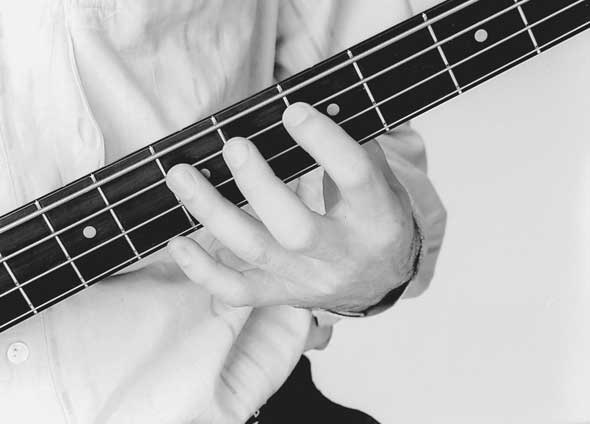
The Hammer-on (marked as H)
A hammer-on refers to the technique of sounding a note without actually picking the string (with the pick or the right hand). The sound is produced by striking the string with one of the left hand fingers. In the following example, only the D note is picked, and the third finger hammers-on firmly to produce the sound of the E note.


The hammer-on effect is indicated by the curved line and the "H" above it. Remember that the second note (E), is not picked; the sound is produced entirely by the third finger hammering on to the string. You must be very careful with the timing of the hammer-on. Both the D and E notes are eighth notes and each should have an equal time value when played (regardless of the hammer-on technique).

This example uses the hammer-on technique.

Fingering 1) changes position – hammer-on between 1st and 3rd finger.
Fingering 2) stays in the same position throughout, however the hammer-on occurs between the 2nd and 4th finger.